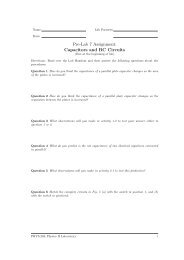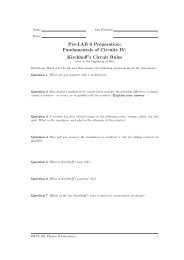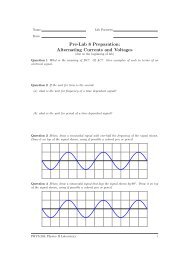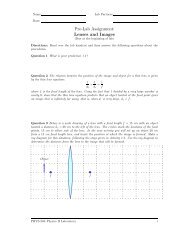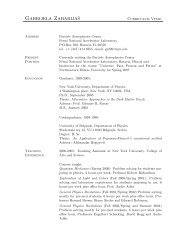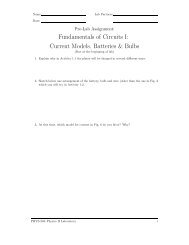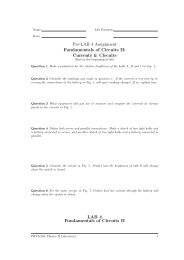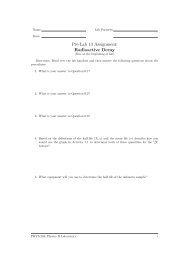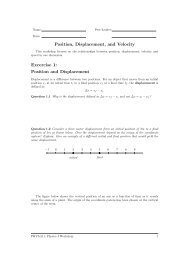Lab & Pre-lab #5: Voltage
Lab & Pre-lab #5: Voltage
Lab & Pre-lab #5: Voltage
Create successful ePaper yourself
Turn your PDF publications into a flip-book with our unique Google optimized e-Paper software.
Fundamentals of Circuits III: <strong>Voltage</strong> & Ohm’s Law v 0.1+A+−VP1−+B−VP2Figure 6: Connection of voltage probes to measure the potential difference across bulb A andacross bulb B.Question 1.13 Now, based on your observations, deduce a rule for how the potential differenceacross individual bulbs connected in series relate to the total potential difference across thecombination of the bulbs. How is this related to the potential difference supplied by the battery?Investigation 2:<strong>Voltage</strong> in Parallel CircuitsWe will also need to learn about the potential differences across different parts of a simpleparallel circuit. Let’s begin with the circuit with two bulbs in parallel with a battery. Youlooked at this circuit in a previous <strong>lab</strong>. It is shown in Fig. 7(a).SS+++−ABVP1+−−A−VP2B(a)(b)Figure 7: (a) Parallel circuit with two bulbs and a battery, and (1)) same circuit with voltageprobe 1 connected to measure the potential difference across the battery and probe 2 connectedto measure the potential difference across bulb A.<strong>Pre</strong>diction 2.1 What do you predict will happen to the potential difference across the batterywhen you close the switch in Fig. 7(a)? Will it increase, decrease or remain essentially thesame? Explain.<strong>Pre</strong>diction 2.2 With the switch in Fig. 7(a) closed, how will the potential difference acrossbulb A compare to the potential difference of the battery? How will the potential difference acrossbulb B compare to the potential difference of the battery?PHYS-204:Physics II <strong>Lab</strong>oratory 8





